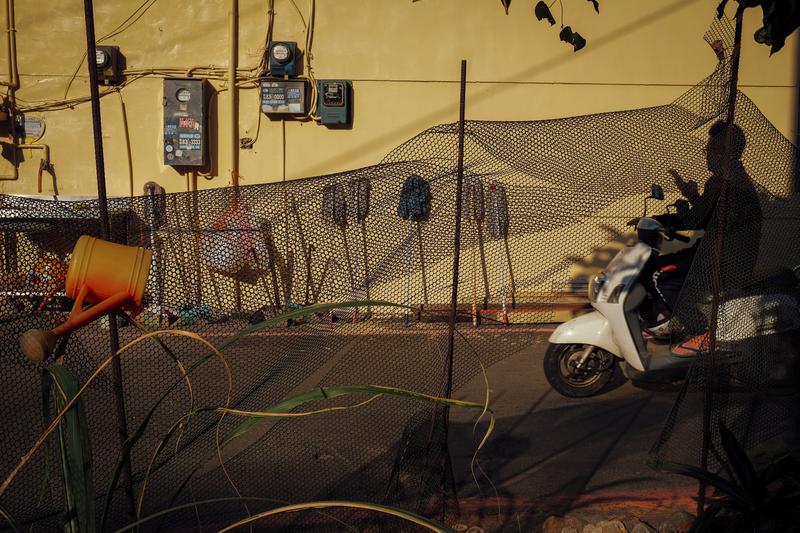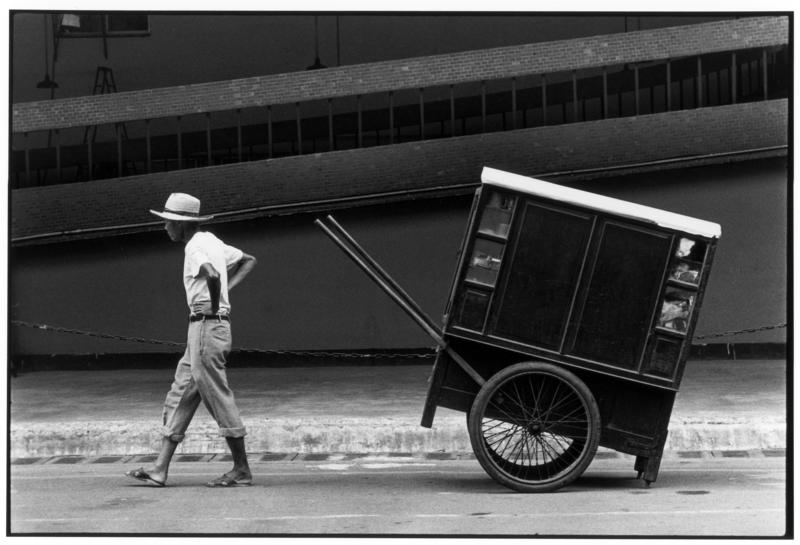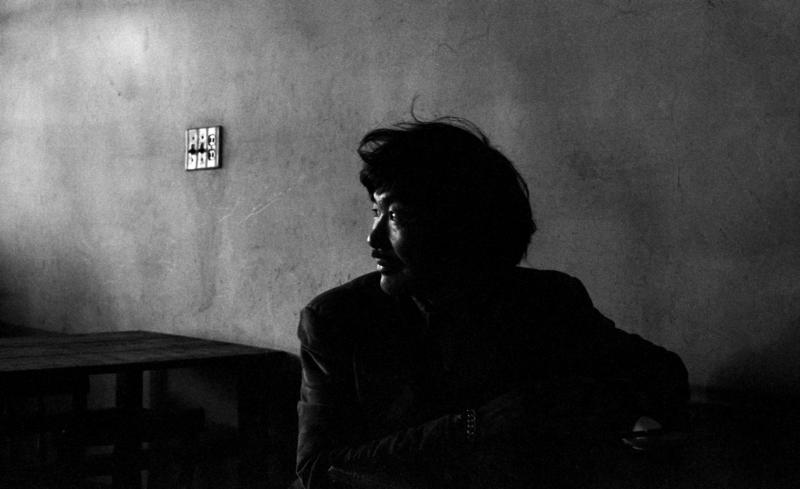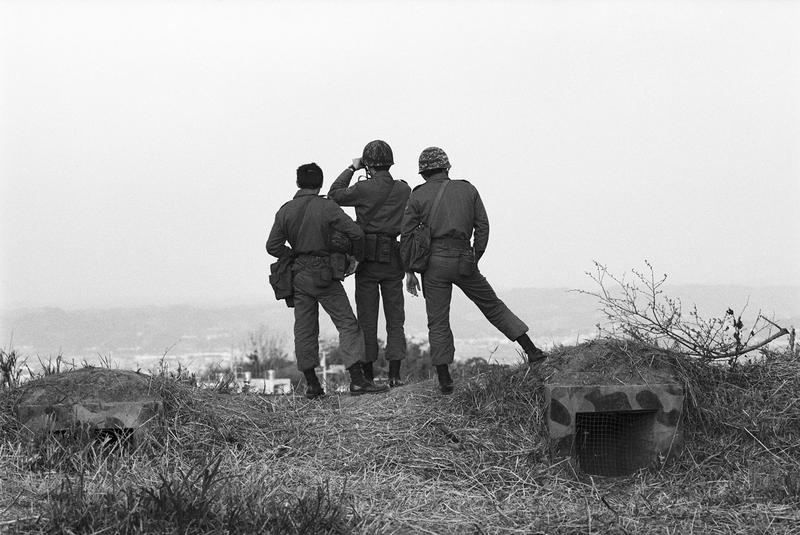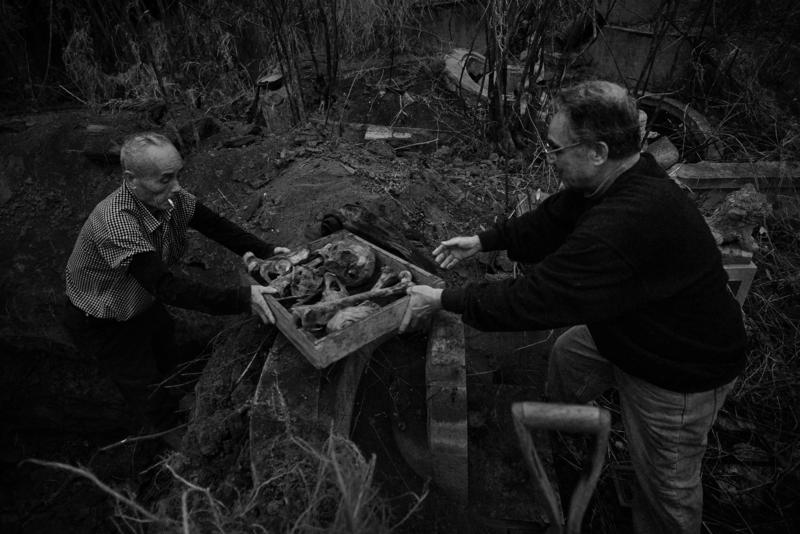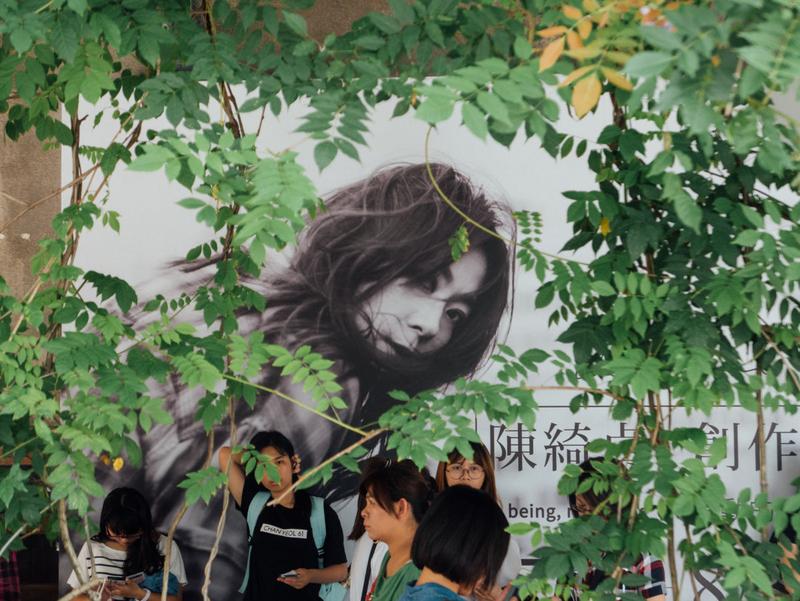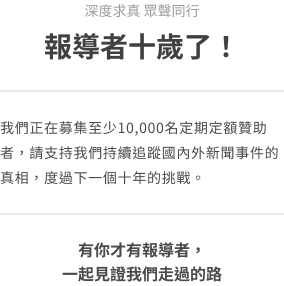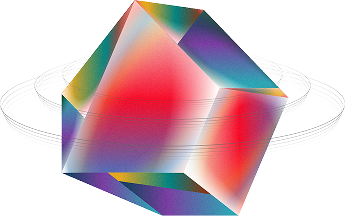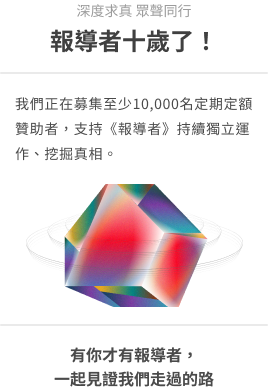Chen Chia-chi/Chronicle of the Ferryman Lin Bo-liang
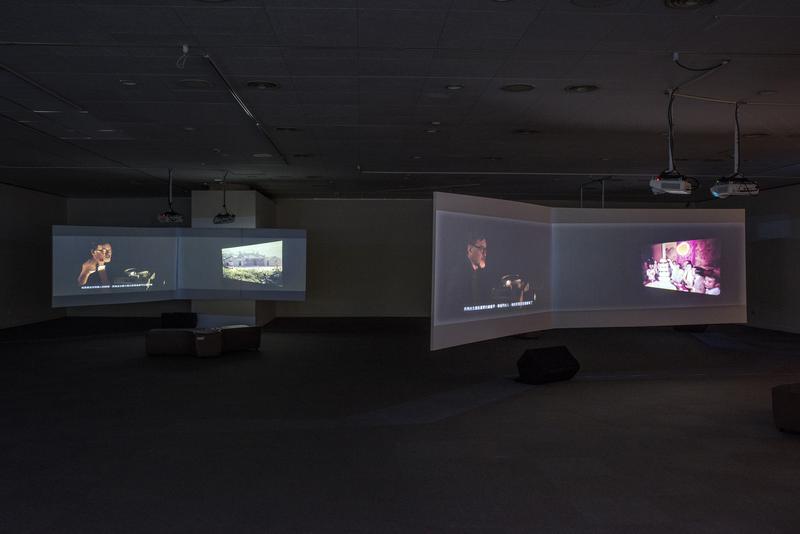
浮槎(音茶),古時傳說中來往於海上和天河之間的木筏,正象徵著林柏樑將近40年的攝影之路,猶如偊偊獨行於袤廣天地間,從不間斷,即使前方從未明朗過,卻也甚少眷顧來路。
1952年出生於高雄的林柏樑,在1975-76年之間師從畫家席德進習畫,他曾與席一同走訪台灣的古蹟與人文地景,因而打開了看見民間之美的眼光。同時期他也開始自習攝影,改變了原先的繪畫志向,始以相機作為表達自我的媒介。1977年,他因心岱的推薦,進入《皇冠》雜誌擔任特約攝影,展開他往後數十年以攝影為職業的生涯。1970-1990年代,他曾經擔任許多知名刊物的專職或特約攝影,如《時報周刊》、《時報雜誌》、《大自然》、《Free China Review》、《人間》等,同時也接受各種來自商業、公部門或非營利組織的攝影委託。
出於工作之故,林柏樑長年下來一直環繞在各種不同的採訪與題材之間,取景造相。其中以常民生活、民藝文物、古蹟廟宇、風景地貌、人物肖像和民俗現場,尤為見長。尤其是傳統與民俗的景致,在林柏樑的鏡頭之下,別具溫暖厚實的色彩與質地,且相較於當時較崇尚黑白傳統的報導攝影,林柏樑更是特別擅長掌握彩色攝影。台灣的陽光與風土,對比強烈而明朗的色調,在其鏡頭之下,顯露無遺。
雖然攝影之於林柏樑,是謀生工具,藝術創作並不是最優先。但卻不代表他的照片只是純為工作而做,反之,他一直是以創作作品的態度面對每一次任務,一如那些他所深深佩服、將純熟手藝奉獻於物的民間藝師工匠。因此,過去席德進所教誨的「藝術從生活中學習」一語,已自然融入於他的照片中。也因為這樣,他的攝影歷程一直不具清晰的創作體系,更類似漫長時光裡逐日積累的一種「無體系的體系」,也是一座與攝影師個人生命行跡共同交織生長的歧徑花園。
林柏樑個展不多,歷來包括:「鹿港龍山寺初探」(1986)、「台灣本土人物」(1996)、「大陸片羽」(1996)、「末代公娼」(2001)、「文學的容顏」(2004)、「私人備忘」(2014),而他唯一參與過的創作團體為1983年加入的「V-10視覺藝術群」。
雖然他的照片常常不全為個人成就而拍攝,但是他的藝術成就早於1994年獲得吳三連獎的肯定,也經常獲邀參與美術館的攝影聯展。近年,他在台南紮根住下,開始慢慢整理自己多年的作品,受到陳伯義、李旭彬、蘇育賢等在地青年藝術家的協助,於4年前在海馬迴光畫館推出「私人備忘」個展,初步展現多年累積攝影作品,帶領觀者重回紀實攝影最精彩的年代,同時也展現了世代傳承的情誼。
本展延續此一精神,集結林柏樑自1970年代迄今、超過百件的攝影創作,是為林柏樑首度以創作歷程為主角之影像個展,展覽同時通過口述影片與裝置,道出許多照片背後的故事、記憶場景與反思。
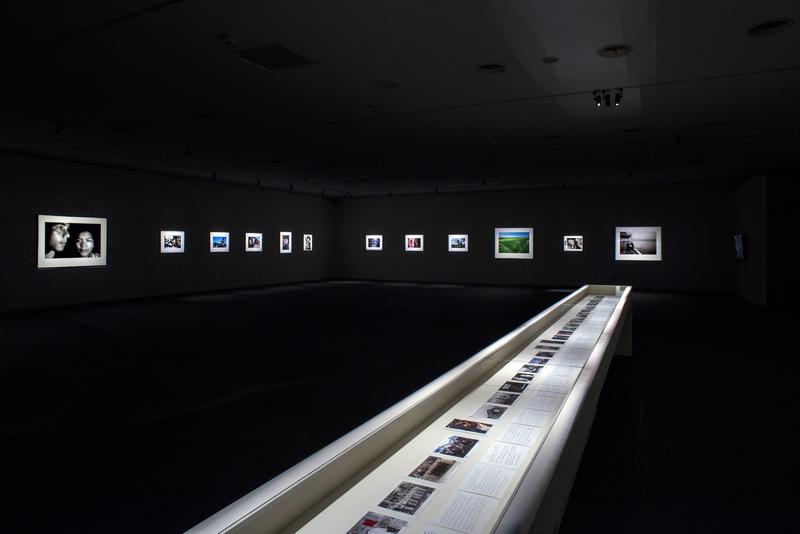
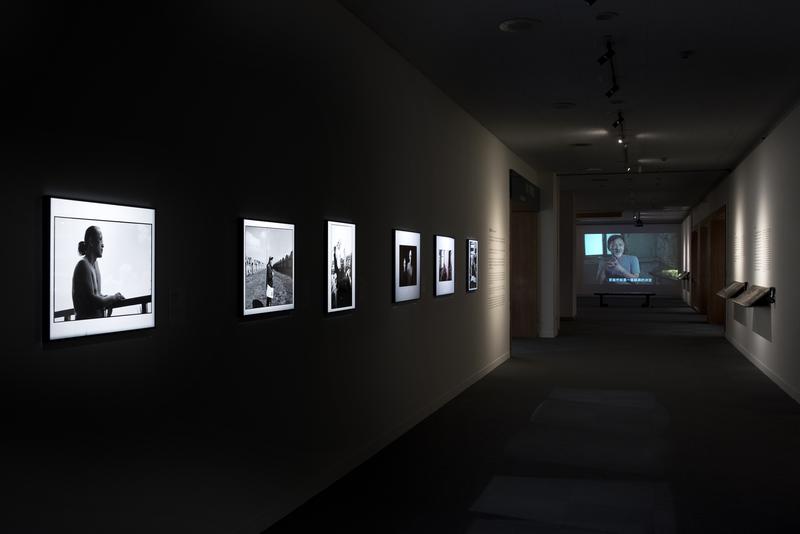
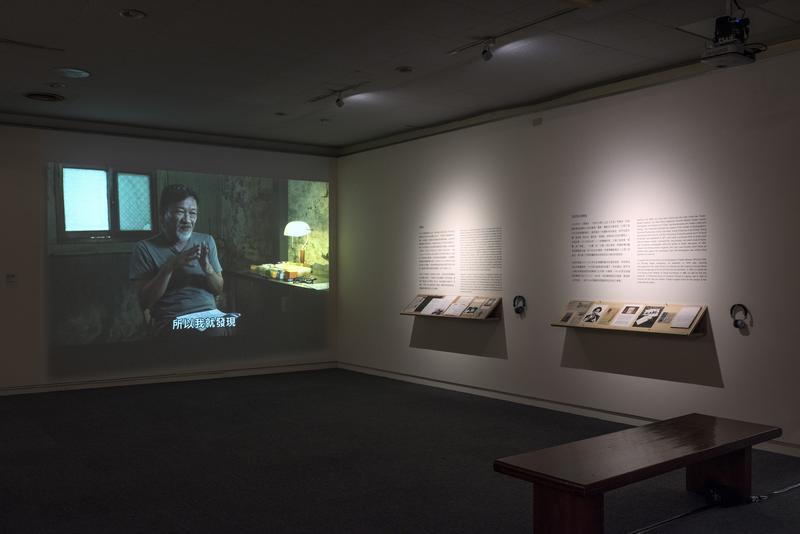
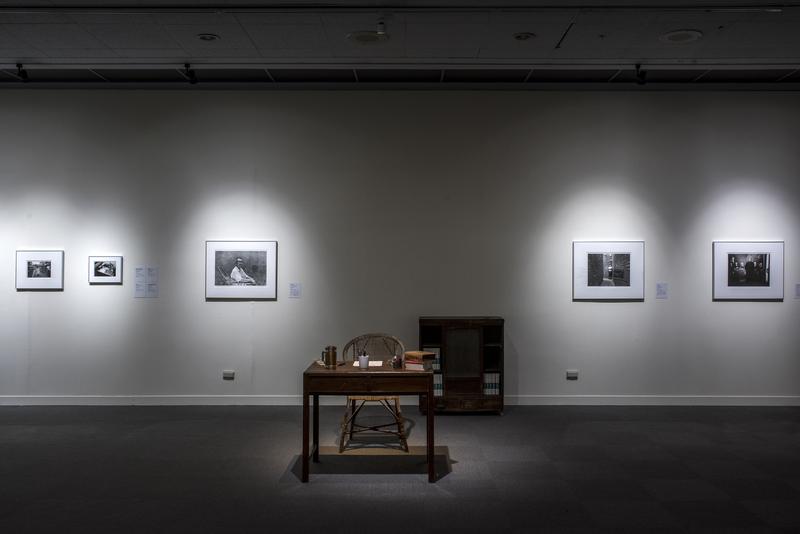
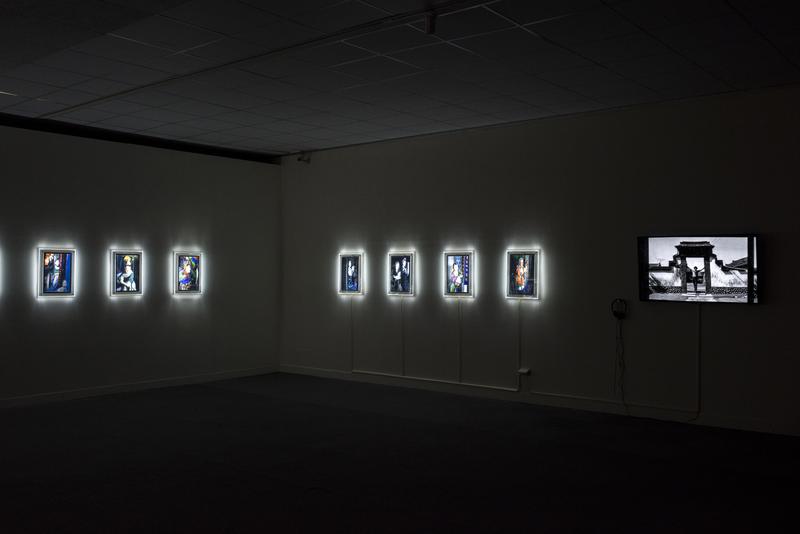
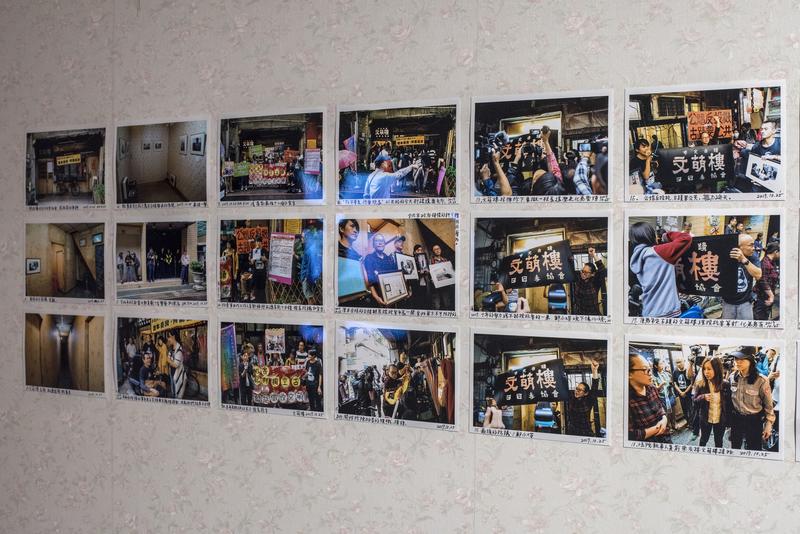
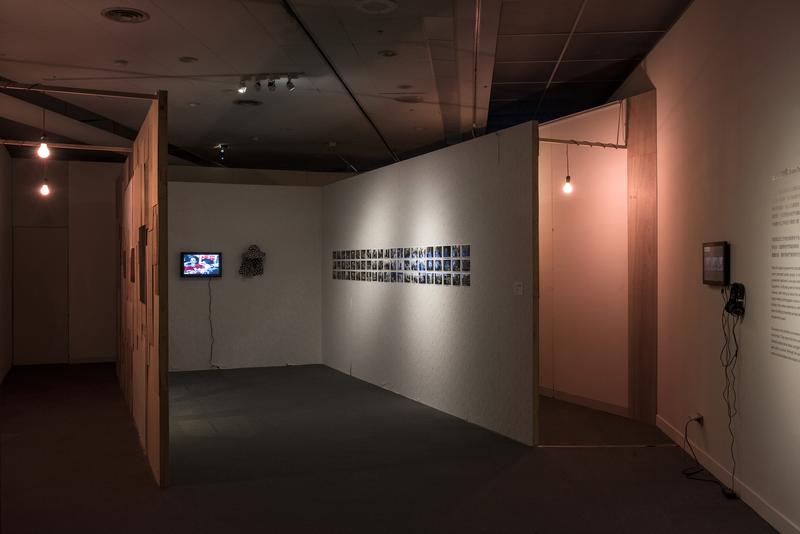
展覽時間:2017.12.9 – 2018.3.4 展覽地點:高雄市立美術館 301-304展覽室 Exhibition Dates : December 9, 2017 to March 4, 2018 Exhibition Venue : Galleries 301-304, Kaohsiung Museum of Fine Arts
A “fucha" is the wooden raft that ferried people back and forth between the sea and river of heaven in ancient myths. Here a fucha symbolizes Lin Bo-liang’s path of photography over the course of 40 years, which was like a solo journey between the vast domains of heaven and earth; Lin never paused on this journey, and even if what was before him had never been illuminated, he nevertheless paid little heed to the path he had taken.
Born in Kaohsiung in 1952, Lin Bo-liang studied painting under Shiy De-jinn in 1975 and ’76. At that time, visits with Shiy to historic sites and cultural attractions throughout Taiwan opened Lin’s eyes to the beauty of the common people’s world. Lin also began learning photography at that time, which prompted him to give up his original ambition to become a painter, and instead use the camera as a medium of self-expression. In 1977, thanks to a recommendation by Hsin Tai, he became a contributing photographer for Crown magazine, and this initiated his multi-decade career as a professional photographer. During the period from 1970 to 1990, he served as a full-time or contributing photographer for many prominent publications, including the China Times Weekly, China Times Magazine, Nature Magazine, Free China Review, and Ren Jian, etc., and he also accepted various photographic assignments from commercial, governmental, and nonprofit organizations.
Due to the needs of his work, Lin Bo-liang has long created photographs revolving around various types of topics and news coverage. But throughout his career, he always specialized in photography of ordinary people’s lives, folk arts and artifacts, historic sites and temples, scenic attractions and landscapes, portraits, and folk events. In particular, Lin uses the camera to lend traditional scenes and folk events colors and textures that evoke warmth and depth. In addition, in contrast with the conventional journalistic photography of his time, which favored black and white images, Lin was exceptionally skilled at color photography, and was adept at perfectly capturing the strongly contrasting, bright hues of Taiwan’s sunshine and local scenery.
Although photography was a means of making a living to Lin Bo-liang, and creativity was not his first priority, this does not imply that his photographs were made purely for the sake of his work. In fact he always approached his jobs with the attitude as if he was making works of art, like those folk art masters that he so deeply admired and who paid homage to their subjects with their marvelous craftsmanship. As a consequence, Shiy De-jinn’s admonition that “art should be learned in the midst of life" was very naturally incorporated in his photographs. And also because of this, Lin’s photographic career had no clear artistic trajectory, but was instead like a cumulative “systemless system" accumulated over a long period of time, while at the same time, his career was like the track of his life, and also like a lush garden with diverging paths.
Lin Bo-liang’s few solo exhibitions included “A Preliminary Study of Longshan Temple in Lugang" (1986), “Local People in Taiwan" (1996), “Glimpses of Mainland China" (1996), “The Last Licensed Prostitutes" (2001), “The Faces of Literature" (2004), and “Personal Memorandum" (2014). The only time that Lin participated in an artistic group was when he joined the “V-10 Visual Art Group" in 1983. Although his photographs were seldom taken for the sake of personal achievement, his artistic achievements were recognized as early as 1994, when he realized the Wu San-lien award, and he has frequently been invited to participate in joint exhibitions of photography at art museums. During the last few years, he has put down roots in Tainan, and slowly begun to organize works created over the course of many years. In this work, he has been assisted by the young local artists Chen Bo-yi, Lee Hsu-pin, and Su Yu-hsien. When he kicked off his solo exhibition “Personal Memorandum" at the Fotoaura Institute of Photography in 2014, this preliminary display of photographs accumulated over a long period of time caused viewers to recall the golden age of documentary photography, and also revealed the friendships that continued as one generation of artists gave way to another.
This exhibition continues in this spirit, and brings together more than 100 of Lin Bo-liang’s photographs from the 1970s until the present. The exhibition is his first solo exhibition in which his photographs have been presented on the basis of his artistic chronology, and it also relies on narrative video and devices to describe the stories, remembered places, and reflections that underlie many of his photographs.
Postdoctoral Research Fellow of Center for Multi-cultural Studies, National Cheng Kung University. 成功大學多元文化研究中心博士後研究員。
深度求真 眾聲同行
獨立的精神,是自由思想的條件。獨立的媒體,才能守護公共領域,讓自由的討論和真相浮現。
在艱困的媒體環境,《報導者》堅持以非營利組織的模式投入公共領域的調查與深度報導。我們透過讀者的贊助支持來營運,不仰賴商業廣告置入,在獨立自主的前提下,穿梭在各項重要公共議題中。
今年是《報導者》成立十週年,請支持我們持續追蹤國內外新聞事件的真相,度過下一個十年的挑戰。

